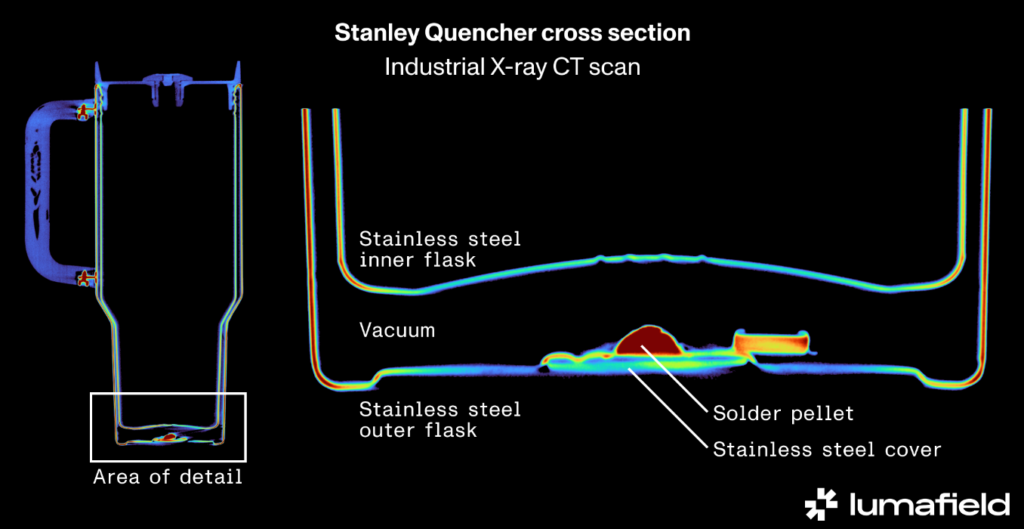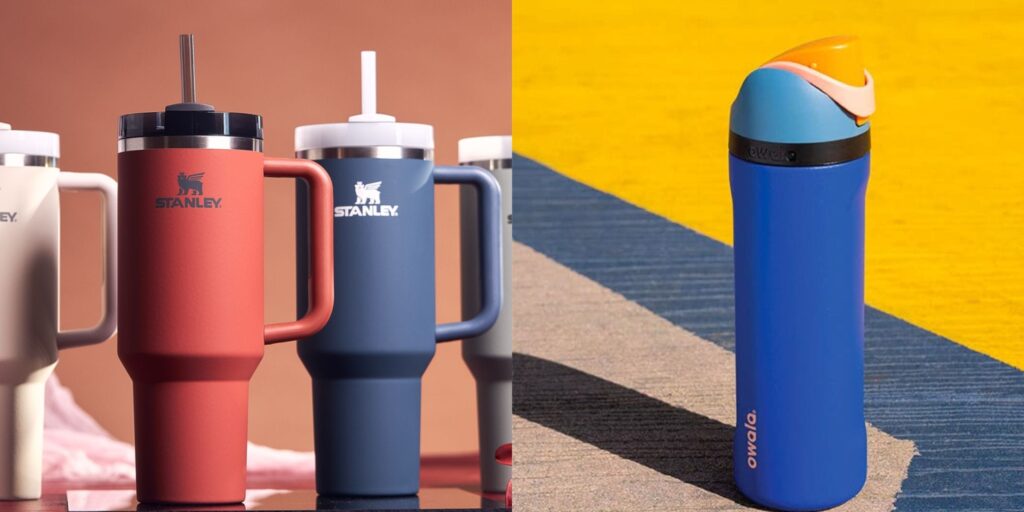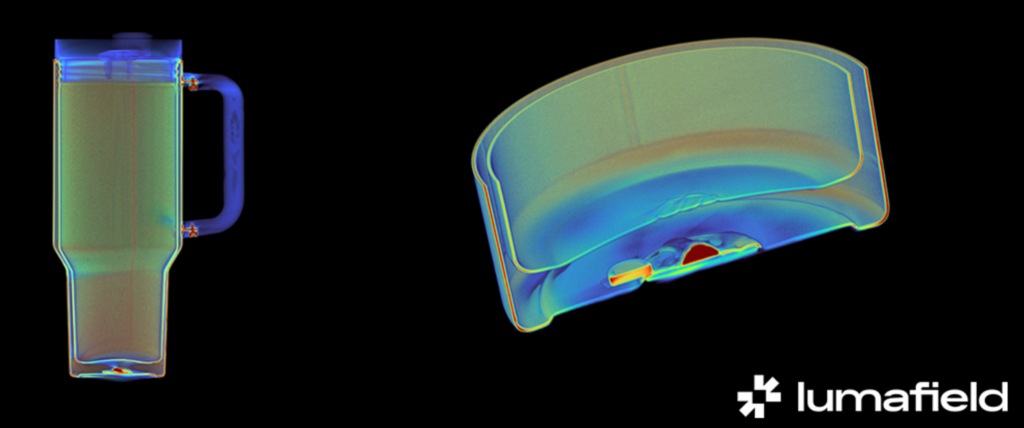- You don't have to worry about getting lead poisoning from Stanley cups, a startup says.
- Lumafield ran a CT scan of the internet-favorite cups and says there's no danger.
- The Quencher tumblers have a lead pellet at the bottom, but it's sealed off from drinkers.
Stanley cup owners, rejoice: The odds of getting lead poisoning from your water bottle are vanishingly small.
That's according to images from a recent industrial CT scan of the viral internet sensation, the Stanley Quencher tumblers.
The images from Lumafield, a startup that makes X-ray CT scanners for engineers, back up what Stanley was saying all along: Yes, the cups contain lead, but users should still be protected from it.
The images show a lead solder pellet, in red, at the bottom of the tumbler, but users shouldn't come into contact with it thanks to a stainless steel protective cover.

"The lead is entirely shielded, and its user won't be exposed to lead at all," said Jon Bruner, Lumafield's head of marketing, in a post on X.
Earlier this year, Stanley addressed the question of lead in its products, pointing out that the pellets are part of an industry-standard manufacturing process.
"Rest assured that no lead is present on the surface of any Stanley product that comes into contact with the consumer nor the contents of the product," the brand said in a post on its support page.
The only risk of contact, Stanley says, is when the cover is damaged or altered in such a way that the lead pellet becomes exposed. In those cases, Stanley says consumers should stop using the product and return it to the company under their lifetime warranty.

Lumafield has scanned all sorts of consumer goods, from AirPods to soccer cleats.
Stanley's competitors Hydroflask and Owala have pounced on the kerfuffle surrounding Stanley's statement, saying that their products don't contain any lead at all.
Future Stanley cups could be lead-free, too; a spokesperson told NBC in January that "our engineering and supply chain teams are making progress on innovative, alternative materials for use in the sealing process."
Once that happens, you can bet that Lumafield will reveal what's inside.
